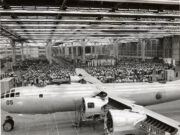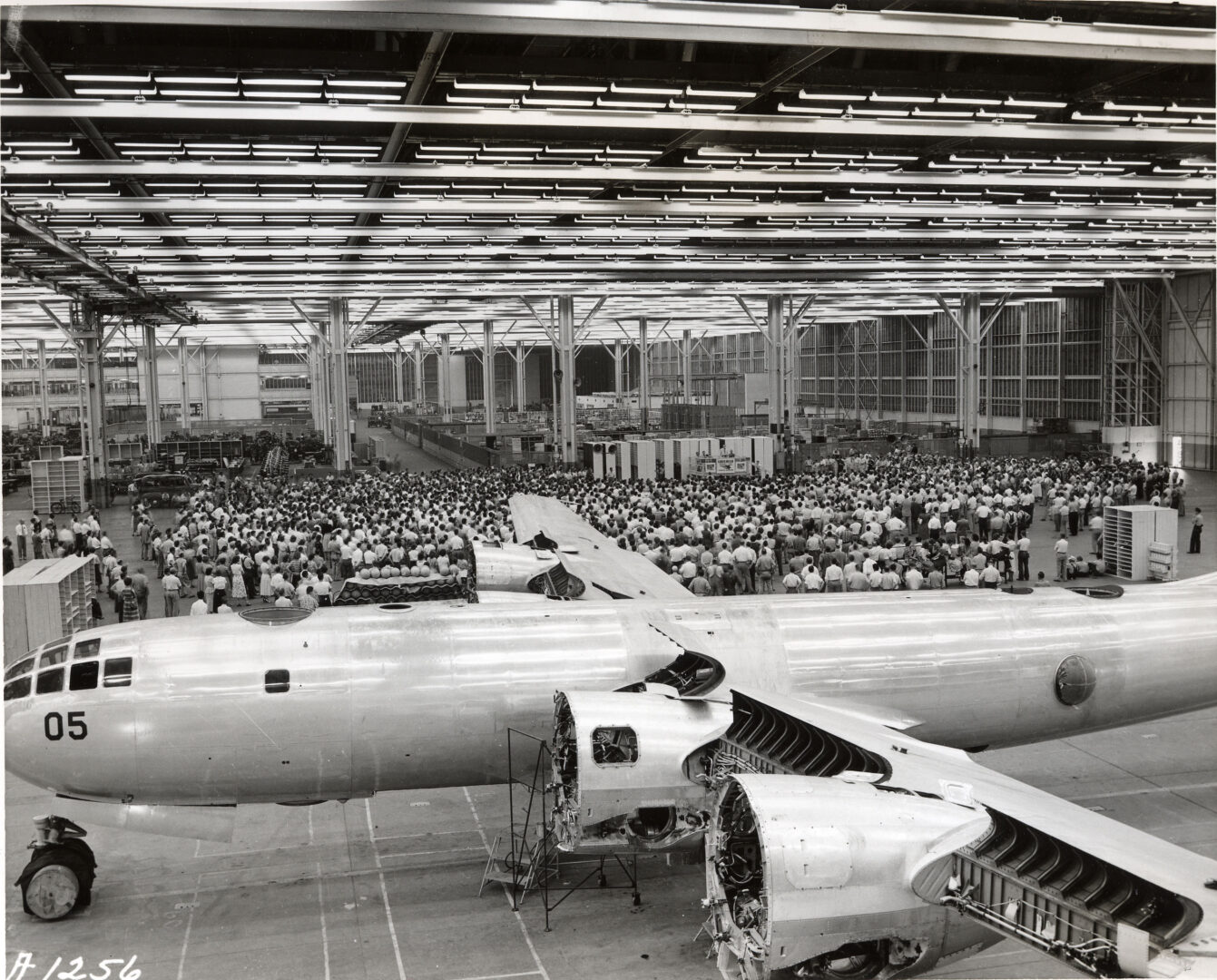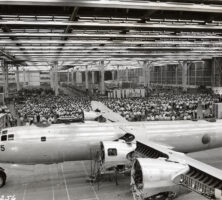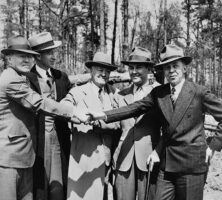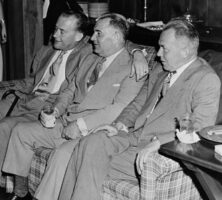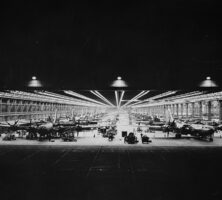During World War II (1941-45) the Bell Aircraft Corporation (known as Bell Bomber) transformed Marietta from the small seat of rural Cobb County to one of the main industrial centers of the Sunbelt. After assembly lines began functioning in the spring of 1943, Bell employees supplied the U.S. Army Air Forces with 663 Boeing-designed B-29s, the first of which were delivered before the end of the year.
The government-owned plant closed immediately after the end of World War II and sat idle until 1951, when it became home to Lockheed-Georgia (later Lockheed Martin). The Bell-trained managers and laborers proved that southerners were capable of sophisticated and meticulous industrial work. With their recently developed skills, they had little trouble finding postwar employment, and they epitomized the New Southerners who brought Georgia into the national mainstream in the mid-twentieth century.
How Marietta Won the Bell Plant
Georgia’s remarkable economic progress in the late twentieth century started with the influx of federal dollars for welfare and defense during the administration of U.S. president Franklin D. Roosevelt. The decision to place Bell Bomber in Marietta was the result of fortuitous circumstances and a generation of dynamic local leaders determined to bring their community out of the Great Depression of the 1930s.
After the Japanese attack on Pearl Harbor on December 7, 1941, the Roosevelt administration decided to build additional aircraft-manufacturing facilities in the nation’s interior, away from vulnerable coastlines. With its excellent railroad network and established airport (Candler Field), Atlanta seemed a likely spot for defense industries. Less than twenty miles from downtown Atlanta, Marietta was connected by streetcar, by the Dixie Highway, and by the state’s first four-lane highway, U.S. 41, then under construction. The north Georgia city seemed well positioned to play a vital role in the nation’s expanding military-industrial complex.
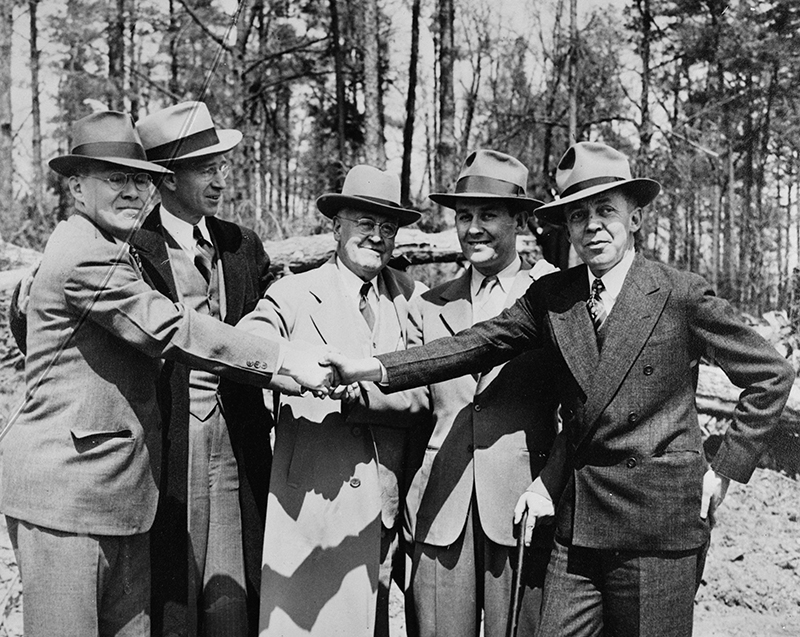
Courtesy of Georgia Archives.
Based in Buffalo, New York, the Bell Aircraft Corporation had only about 1,000 employees when the United States entered World War II. Founded by Lawrence D. Bell in 1935, the company had recently won a military contract for the single-engine P-39 Airacobra pursuit plane. About two weeks after Pearl Harbor, Bell learned that the government had selected his company to build B-29s in the Atlanta area. Still in the design stage, the technically advanced four-engine B-29 would be the country’s largest and longest-range bomber.
Local boosters and a native general played key roles in persuading the U.S. Army to choose Cobb County over other potential sites in the Atlanta area. General Lucius D. Clay was the son of Alexander Stephens Clay of Marietta, a U.S. senator from 1897 to 1910. In September 1940 President Roosevelt tapped General Clay to head an emergency airport-construction program, under the Civil Aeronautics Administration, to prepare the country for war. Over the next fifteen months Clay helped initiate the construction of some 450 airstrips, including Rickenbacker Field in Marietta, named after World War I (1917-18) flying ace and Eastern Air LInes president Eddie Rickenbacker, who later agreed to route some Eastern flights into Marietta.
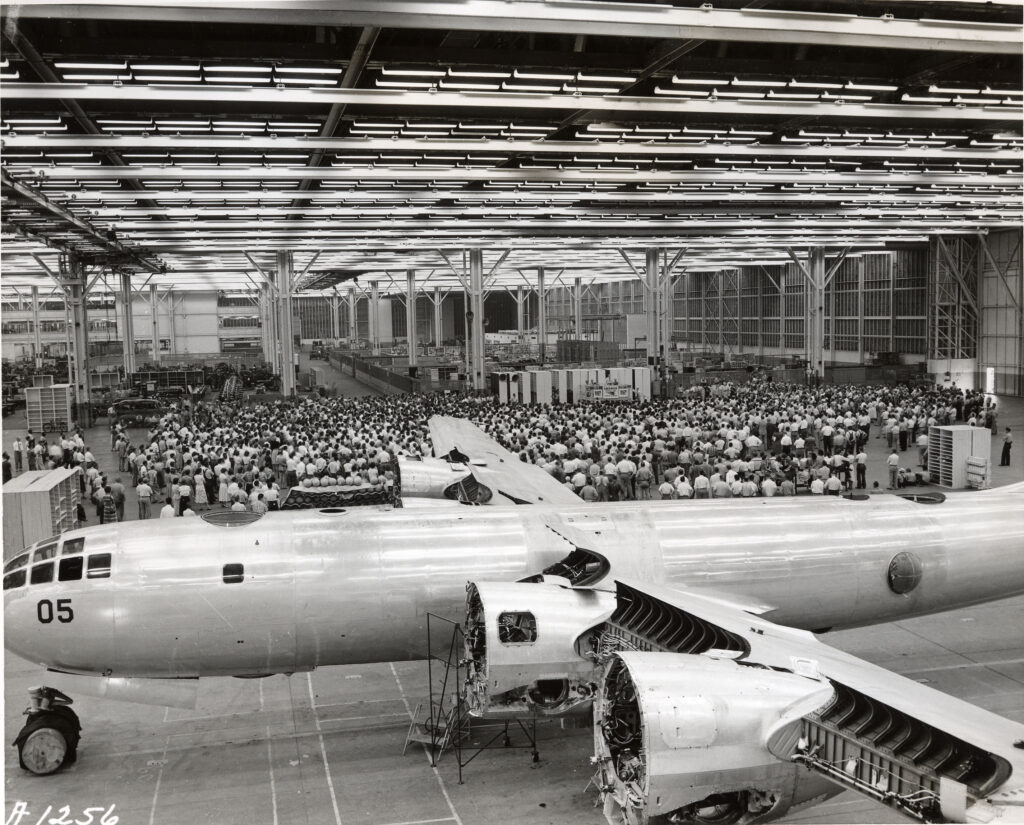
Courtesy of Atlanta History Center.
Envisioned locally as a commercial airport, Rickenbacker Field clearly had military potential. Shortly after the Japanese attack on Pearl Harbor, Cobb County officials began lobbying for the Bell plant. By that time Clay had become the director of materiel for the U.S. War Department, with considerable influence over military contracts. His recommendation of Marietta helped clinch the deal, and on February 19, 1942, the War Department announced that Marietta had been selected.
Impact of Bell Bomber
By the war’s end, the War Department had put $73 million into the plant, which was originally estimated as a $15 million project. In May 1943 the Army Air Corps accepted title to Rickenbacker Field and converted it into an installation that would be named Dobbins Air Force Base (later Dobbins Air Reserve Base) in 1950 to honor Captain Charles M. Dobbins, a Mariettan whose plane was shot down near Sicily during the war. Atlanta-based Robert and Company designed and managed the construction of the aircraft plant. The main B-1 assembly building covered more than 3.2 million square feet and took thirteen months to finish. Including the B-2 administration building and various other structures, the total project encompassed almost 4.2 million square feet, making it the largest business facility ever constructed in the Deep South.
In its brief history the plant had four general managers. The first three, Captain Harry E. Collins, Omer Woodson, and Carl Cover, had substantial experience in the industry. The last, James V. Carmichael, a lawyer and politician with no background in airplane manufacturing, served as the company attorney and became general manager in late 1944, after his predecessor was killed in a plane crash. Despite his lack of an engineering background, Carmichael mastered technical language and details quickly. By surrounding himself with competent assistants, he managed to keep the assembly lines producing on schedule and with no crashes in testing or delivering planes to the military.
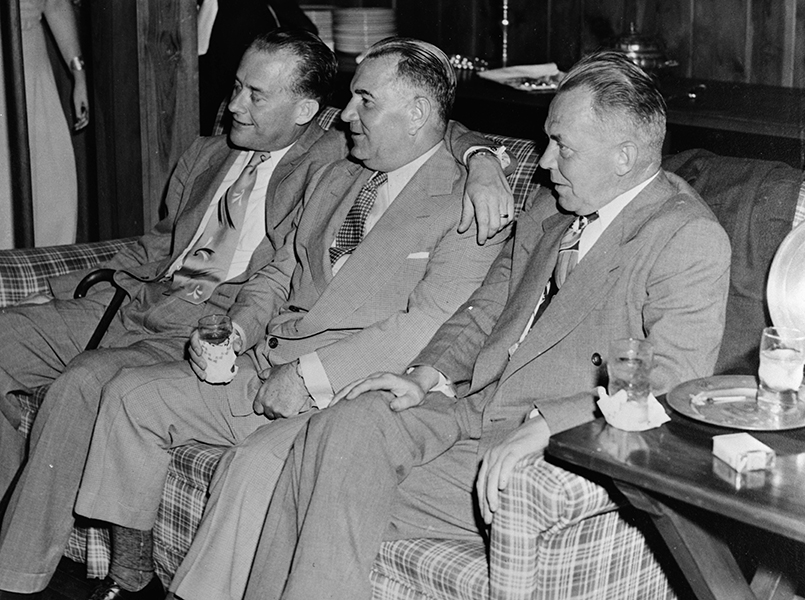
Courtesy of Georgia Archives.
Bell Bomber reached its peak employment of 28,158 workers in February 1945. About nine in ten employees were southerners, with the vast majority coming from communities in north Georgia. Some 37 percent were women, 8 percent Black, and 6 percent physically disabled. Opportunities for advancement were limited for women and African Americans, and the job sites were segregated. Yet Bell’s equal-opportunity record was no worse than other southern industries of that era, and its pay scale was substantially higher.
By mid-1945 the plant began scaling back production and workers in preparation for the end of the war. Shortly after the Japanese surrendered, the government canceled the B-29 contract. By the end of September the Georgia Division was down to a few thousand workers.
The local economy slowed slightly after the plant closed, but Marietta avoided serious unemployment, and the percentage of occupied houses and apartments remained high. The government used the massive B-1 building to store abandoned machine tools, and the Veterans Administration and other agencies took over the B-2 building. The population of Cobb County reached 62,000 by 1950, up more than 60 percent from the total a decade earlier. In that year the United States found itself in an undeclared war in Korea, and in January 1951 the air force invited the Lockheed Corporation to reopen the plant, with its first task the refurbishing of B-29s for the conflict. What Bell had started Lockheed continued, turning a formerly sleepy county into one of the most rapidly growing places in the country.


